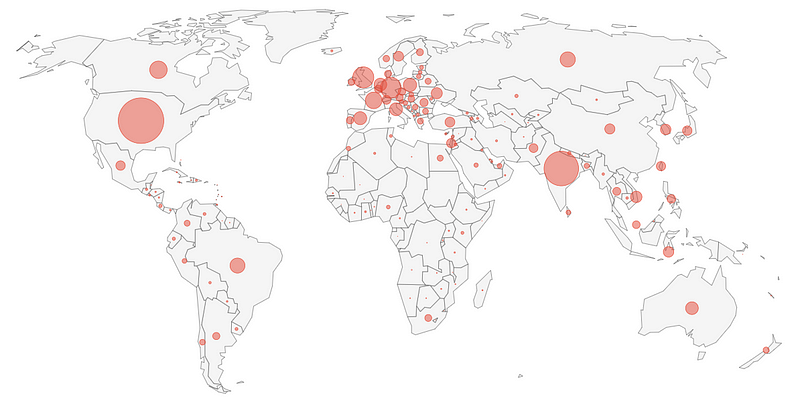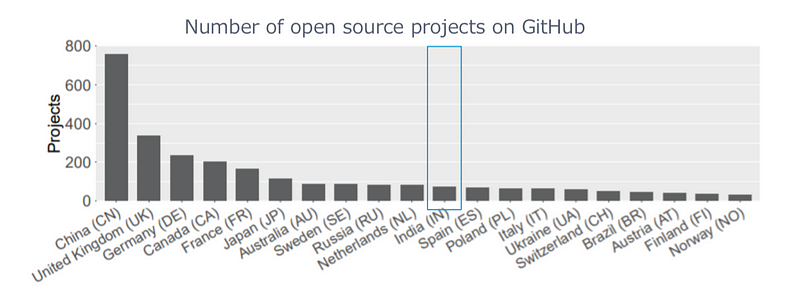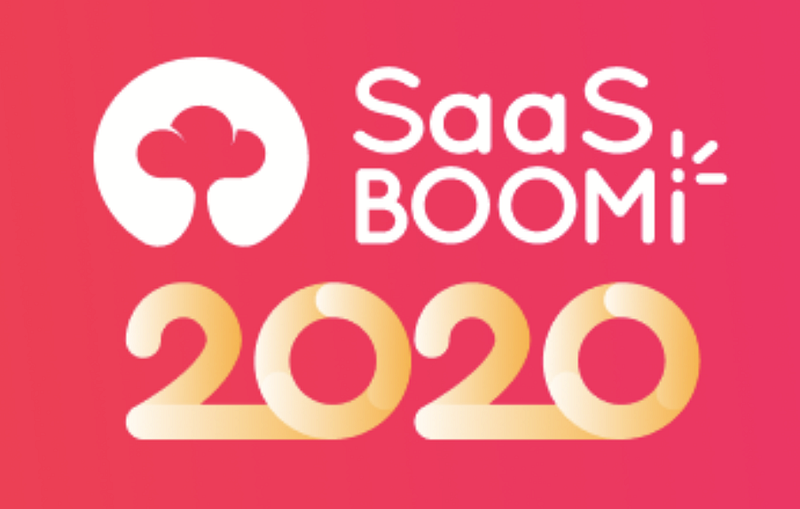State of Open-Source in India
And why it matters

And why it matters
I spent last Saturday surrounded by developers at IndiaOS in Bangalore, an open source conference organised by folks at Zerodha and ERPNext/Frappe. While a small event of 100–200 people, the energy around me was palpable. Dev interest in open-source was easily showcased by the fact that the organisers had to move the conference venue 5 days before the event to a larger location.
As a result of attending the event and invigorating my dev roots, I thought I’d do a quick review of where we are at with the open source phenomena in India. But before we dive in, a bit of history about open-source itself.
Pioneered by Richard Stallman and Linus Torvalds, from day 1, there were many advantages of open-source software paradigm over the conventional closed-software.
- Code Quality (QA function): “Given enough eyeballs, all bugs are shallow.” Open source projects leverage the power of the crowd to find and fix bugs before they become critical vulnerabilities, while maintaining the overall quality of code
- Code Reuse (Dev function): The ability to reuse code freely and build on top of it saves countless hours of replicable dev effort
- Proof of Code (Trust function): Transparency of code base brings accountability to the project creators
With the advent of Git and specifically Github, two other advantages of PM function (code requests) and Marketing function (indexable repositories) opened up.
Open-source software in itself has gone through multiple waves in last few decades. Mike Volpi from Index Ventures succinctly summarises the various generations of this paradigm and how it has progressed over time.
Gen 1 OSS, 1990s
Where open source software was developed as a free alternative to monopolistic close-source software and the dev community acted as contributors to the projects. Examples would be MySQL for databases, Linux for OS and such. The contributors in this age served all functions within the project
Talk is Cheap. Show me the code. — Linus Torvalds
Gen 2 OSS, 2000s
Where enterprise versions of open source software were developed and monetised. Popular examples would be Cloudera, HortonWorks and Hadoop. The community ended up playing the PM, QA, and Marketing roles in the company rather than the Dev role
Gen 3 OSS, 2010s
The Gen 2 OSS didn’t provide cloud native products as part of their offerings and other companies were free to reap the benefits of this. This led to the new OSS community adopting a cloud native approach towards OSS and products were built with freemium pricing and paywalls. Popular examples would be MongoDB, Elastic and Confluent. The dev community has now ended up restricting to a bit of PM/QA and mostly Marketing roles.
As we enter into 2020s it will be interesting to see how OSS evolves in the new format.
Coming back to India, we see that, despite being one of the most active developer bases globally, our country is still far behind in Open source adoption and participation.

India represents the second largest developer base on StackOverflow with 13% monthly visits compared to US at 23%. I am confident that within this decade India will become the largest base of developers.

However, we are still far behind in Open-source contributions and participation. With more community building and dev evangelism I see this also changing rapidly, likely within this decade. At STRIVE, we ourselves have been lucky to be a part of Hasura’s journey from closed-source to open-source.

Which brings me back to IndiaOS. During the conference many interesting topics were covered, and I tried to sit in as many sessions as possible. The most exciting ones were where developers showed the use of open-source in bringing change in their society especially the Kerala Rescue website that was started to rescue and bring relief to Kerala flood victims by a few IEEE developers and later global contributors. Some others that shone out for me were: Gramener’s talk on maps and their open source project reshaper to split and combine shapefiles as well as Anish Sheela’s talk on handwriting recognition without ML using curves.
Towards the end, during Kiran Jonnalagadda’s talk on “Lessons from HasGeek’s FOSS Journey” an important debate around the role of FOSS and OSS was raised. According to Kiran, free software looks at user’s rights but Open source flips it and talks about creator’s/maintainer’s rights. The entire premise of Open-source is baked into community participation, but unfortunately with the millions of projects out there and the ever-decreasing time for pro-bono participation, this premise has taken a hit. HasGeek’s own journey has seen very few external contributions, and the project has been built primarily internally. It’s an important point to ponder over: what can encourage others to participate to your project, and is it even important?
One thing is for sure, as a VC who understands and can write code, I personally want to have a front seat to all of this.
If you are building an open source software company based out of India, we would love to brainstorm and learn from each other. If you want to meet us, catch us at SaaSBoomi next on Jan 24 in Chennai.

